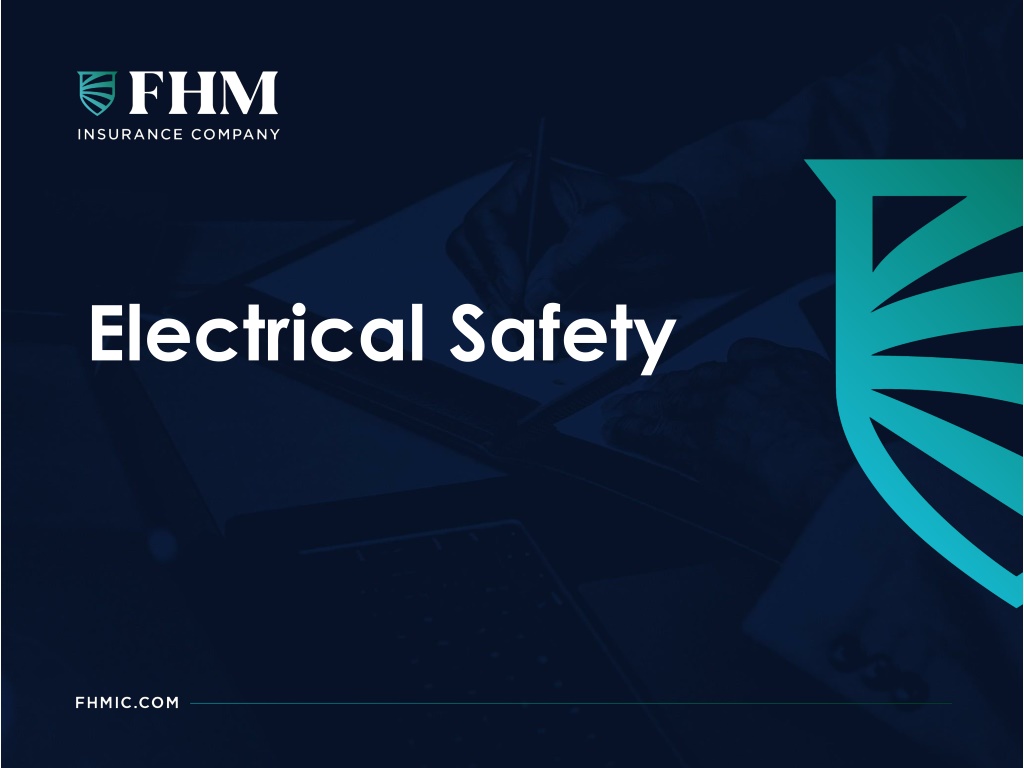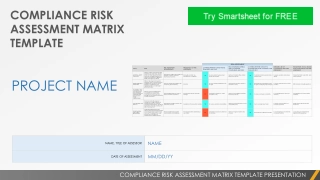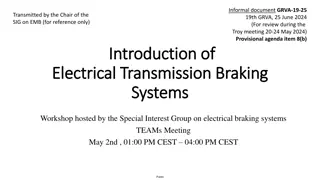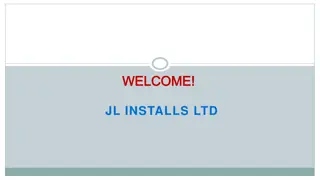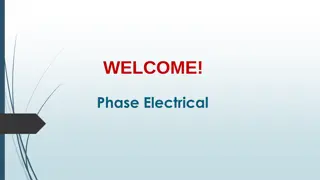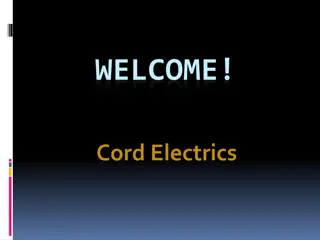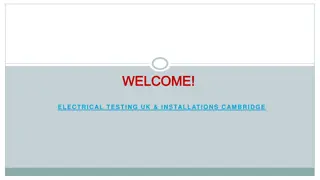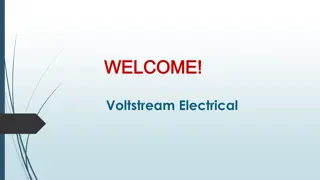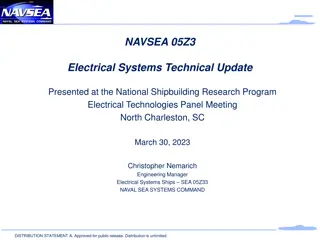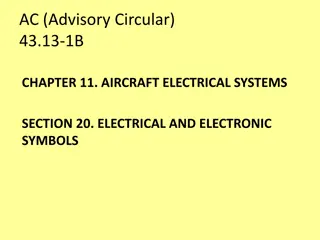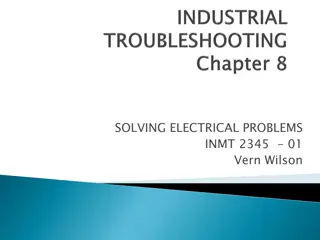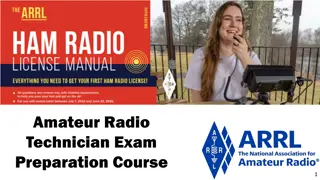Electrical Safety Training Overview
This overview covers essential information for maintaining electrical safety in the workplace, including OSHA standards, safe work practices, electricity basics, hazards, and responsibilities. Topics include electricity generation facts, OSHA requirements for working with energized systems, electricity terms, and the basics of current flow. It emphasizes the importance of qualified personnel, proper training, and adherence to safety protocols to prevent electric hazards and ensure a safe working environment.
Download Presentation

Please find below an Image/Link to download the presentation.
The content on the website is provided AS IS for your information and personal use only. It may not be sold, licensed, or shared on other websites without obtaining consent from the author. Download presentation by click this link. If you encounter any issues during the download, it is possible that the publisher has removed the file from their server.
E N D
Presentation Transcript
Learning Objectives Be familiar with the information required by the OSHA s standard for Electrical Safety-Related Work Practices, Code of Federal Regulations as Title 29 Part 1910.332 Possess information necessary to work safely with, on, or near electrically- powered equipment
Overview Electricity Basics Agenda Electricity Hazards Safe Work Practices Responsibilities
Electricity Facts: Electrical generation is less than 150 years old Average of one worker electrocution daily Major cause of home fires
OSHA Standards Requires safe work practices and protective equipment when electric hazards are present Qualified person familiar with electrical equipment and its hazards Covers daily use of electrically-powered equipment
OSHA Requirements Qualified employees may work on energized systems Required training: Distinguishing exposed live parts Determining nominal voltage OSHA specified clearance distances
Electricity Terms: Current the movement of electrical charge Circuit the flow of electrical charge Resistance opposition to current flow Voltage measure of electrical force Conductors substances with little electrical resistance Insulators substances with high electrical resistance Grounding conductive connection to the earth
Back to the Basics: Electricity is the flow of electrons through a conductor Current is the flow and measured in amps Current only flows within a complete circuit Current flows due to voltage DC is constant voltage AC is alternating current
Electricity related injuries Electrocution death due to electrical shock Electrical shock non-fatal shocks Burns most common Falls from muscle spasms due to shocks
Electrical Shock Occur when a part of the body encounters an electrical circuit Small currents and low voltages can still be fatal Severity of shock depends on: Path through the body Amount of current Length of time in circuit
Grounding Best Practices Clothing and jewelry Electrical protective devices Maintaining distances Guarding energized parts Proper use of cords
Proper Grounding Grounding is a physical connection to the earth: Grounding paths must be permanent and continuous Service or System Ground primarily designed to protect machines and tools against damage Equipment Ground provides a path from the tool or machine for current to flow to the ground
Proper Grounding Hand-held tools must be: Equipped with three-wire cord with ground Plugged into a grounded receptacle Double-insulated Powered by a low-voltage isolation transformer
Electrical Protective Devices Fuses will be destroyed before considerable damage can be dealt Circuit breakers a set of contacts opens the circuit Ground-fault circuit-interrupters
Electrical Protective Devices Ground-fault circuit-interrupter (GFCI): Detect leakage currents Matches current going to a device against current returning Shuts down within 1/40th of a second when fault is detected Able to detect loss of current due to a person who is being shocked
Guarding Engergized Parts Equipment operating at 50 volts or more should be isolated by: Protective cabinet or enclosure Permanent partitions Elevation above working surface Must be conspicuously marked
Guarding Engergized Parts All wiring needs to be protected: Junction boxes, outlet boxes, switches and fittings must have approved covers Unused openings must be closed Wiring needs to be intact and shielded
Proper Extension Cord Usage Aging Door or window edges Causes of cord damage: Staples or fastenings Abrasions Activities in the area
Proper Extension Cord Usage Extension Cord Don ts Use as a substitute for fixed wiring Run through holes in walls, ceilings or floors Run through doorways or windows Attached to building surfaces Concealed behind walls, ceilings, or floors
Maintaining Distances Overhead power lines are not insulated Unqualified workers are required to maintain at least 10-foot clearance Fallen overhead wires should never be touched Ladders should not be used near power lines
Clothing and Jewelry Conductive clothing and jewelry: Watch bands Bracelets Rings Key chains Necklaces Metalized aprons Cloth with conductive thread Metal headgear
Electrical Hazard Clues Tripped circuit breakers Wiring pulling loose Blown fuses Damaged insulation Warm wiring GFCI shuts down the circuit
Be Responsible De-energizing equipment before inspecting Maintain and inspect electrical tools Be aware of your surroundings Inspect and properly use extension cords Wear personal protective equipment when necessary Maintain 10-foot clearance from overhead power lines
